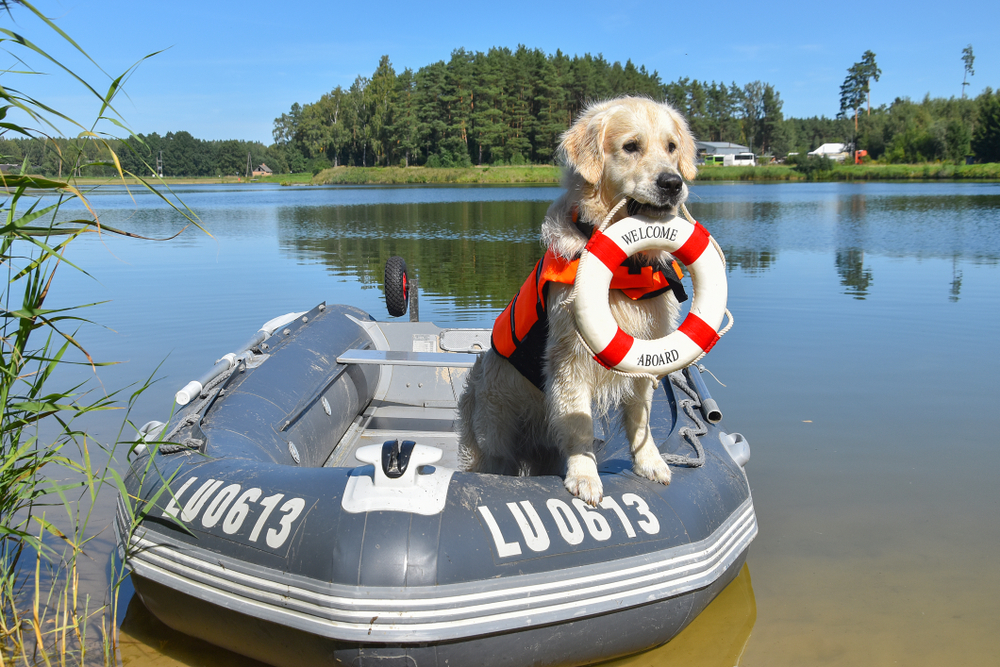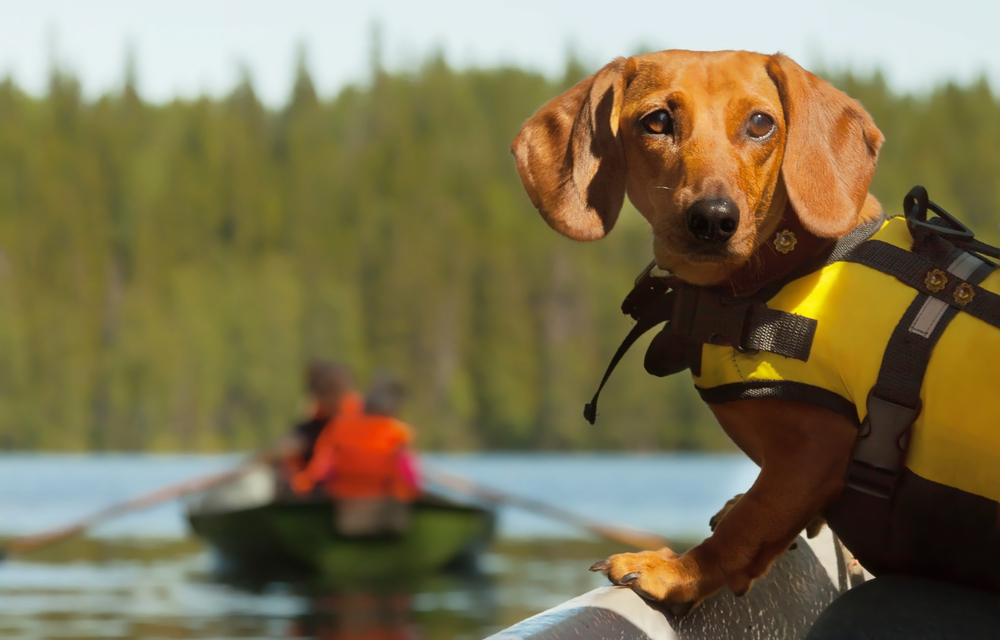One of the best things about owning a dog is their innate ability to enjoy any activity — as long as it’s with their human. Whether it’s simply a brisk walk around the neighborhood or a weekend camping trip, dogs are almost always up for the adventure.
Thanks to today’s pet-friendly culture, it’s easier than ever to take your furry family member with you almost everywhere you go. If your family spends a lot of time boating, there’s no reason your dog can’t share in the fun. The key is to teach him these six lessons before you set sail to ensure a safe and enjoyable experience for all concerned.

Make sure he knows how to swim
Believe it or not, not all dogs are natural swimmers. Some don’t even like the water. That’s why it’s best to teach your dog how to swim before you take him boating. Even if you aren’t planning to get in the water, accidents happen. It’s important to know that if your dog accidentally falls (or jumps) overboard, he’ll know how to keep himself afloat until you can get him back into the boat or safely to shore.
Invest in doggie swimming lessons from a qualified instructor in your area or teach him yourself. Whichever method you choose, be sure to start well in advance of boating season so you can be confident that your pup will be safe in the water when the time comes to push away from shore.
Invest in a life jacket
Speaking of keeping your dog afloat in the water, making him wear a personal floatation device (PFD) whenever he’s on the boat (or near water) is a great way to keep him safe in case of an accident.
Dogs come in all shapes and sizes, and so do their PFDs. Take measurements and follow the online sizing charts to purchase one that fits your dog well. Let him wear it on dry land first so he becomes comfortable with the way it feels. If possible, conduct a few practice sessions before boating so that he can get the feel of being buoyant when he wears the PFD in the water.
Designate where your dog should relieve himself
When you’re out in the middle of the lake and nature calls, make sure your dog knows where to relieve himself appropriately if you can’t get to shore. Puppy training pads are a great solution to this problem. So is a small piece of artificial grass. All it takes is a little training to get him used to the idea.
Start at home by introducing your dog to the concept. If your dog is reluctant to relieve himself indoors, move the pad outdoors and spray it with some housebreaking spray to get him used to eliminating on that spot. Once he gets the hang of it, he’ll be more comfortable taking care of business on the boat where designated if he can’t wait until it’s docked.

Teach your dog how to get in and out of the boat
If your dog is small enough to carry on and off the boat, you’re all set. Those with bigger dogs will want to spend some time teaching them how to get safely on and off board.
While this may not be a big deal for some dogs, remember that boats tend to rock, which creates an uneven surface that some dogs won’t like. If possible, use a sturdy ramp or ladder and begin practicing on a day when the water is calm. Use treats, praise, and lots of patience to show your dog the correct way to enter and exit the boat.
Create a place for your dog to stay on the boat
Just as with a moving car, it’s best to designate a safe spot for your dog to stay while the boat is in motion. Consider investing in a nonslip mat you can stash in an out-of-the-way place on board where your dog can lie. Not only will this keep him out of harm’s way, but it will also become a secure place for him to retreat when he becomes too hot or tired.
Train your dog to come when called
This is a basic command that can keep your dog safe in a variety of situations, especially if he is a swimmer who enjoys splashing around with the rest of the family. It’s easy for any dog to get distracted by waterfowl and swim away from the family. Make sure yours has mastered the command on dry land before you begin teaching him to come when called while he’s swimming.
All set? It’s time to head out on the water. Boating can be a lot of fun for the family, including the furry, four-legged members. Every dog is different, so if you decide to include yours on boating excursions, be sensitive to his unique personality as you introduce him to the new activity. For the most part, our dogs love being with us wherever we go. With a little training and a lot of patience, your dog will become your first mate in no time.


